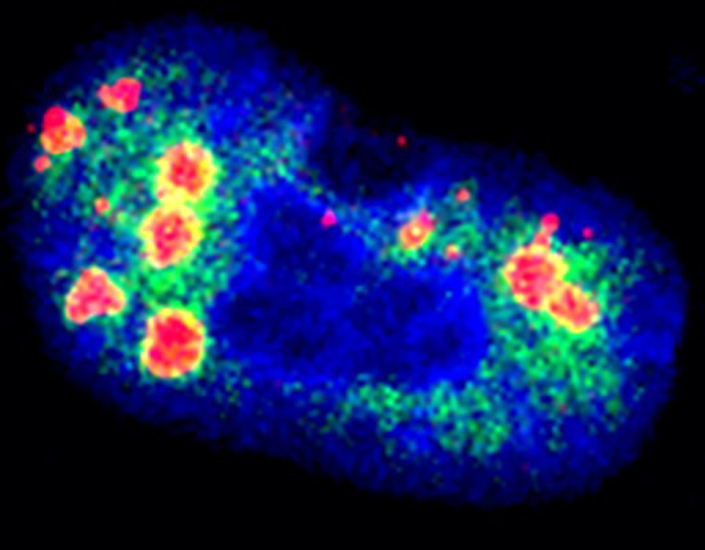Viruses employ specific host proteins to move within cells, study shows

Viruses have a very limited set of genes and, therefore, must use the cellular machineries of their hosts for most parts of their growth. In a new study, scientists at Texas A&M University and Uppsala University have discovered a specific host protein that many viruses use for their transport within the cell.
The human gene, ZC3H11A, is found in all vertebrates and is expressed essentially in all human cells. The gene has been known for about 20 years, but its functional importance has been unknown.
However, a team led by Texas A&M professor Leif Andersson has discovered that ZC3H11A is critical for the replication of multiple medically important viruses—including adenovirus, influenza virus, HIV, and herpes simplex virus—which opens up new possibilities for the development of new broad-spectrum antiviral therapies.
The discovery was published April 2 in the Proceedings of the National Academy of Sciences.
With modern DNA sequencing technologies, it is relatively easy to identify all genes coding for proteins in an organism, but it is often much more challenging to really understand the cellular function of proteins, according to Andersson, professor of animal genomics in the Department of Veterinary Integrative Biosciences at Texas A&M’s College of Veterinary Medicine & Biomedical Sciences, and professor of functional genomics at Sweden’s Uppsala University.
The discovery is the result of a project by Uppsala doctoral student Shady Younis, who used the gene-editing tool CRISPR-Cas9 to inactivate the ZC3H11A gene in a human cell line; initially, he found that the inactivation of ZC3H11A had little effect, showing that it is not essential for the growth of these human cells.
But while discussing his finding with fellow doctoral student Wael Kamel, Younis decided to challenge the cells lacking ZC3H11A with a virus infection.
To their surprise, there was a drastic reduction of the growth of adenovirus (a group of viruses that can infect the tissue linings of the respiratory tract, eyes, intestines, urinary tract, and nervous system) in the cells lacking ZC3H11A, compared with cells expressing the protein.
The team has now demonstrated that at least four different viruses that replicate in the host cell nucleus are dependent on the ZC3H11A protein for their efficient growth; these viruses need ZC3H11A for the transport of virus RNA from the nucleus to the cytoplasm, where the virus proteins will be produced before the viruses can exit the cell and infect other cells, Kamel said.
“This serendipitous discovery is an excellent example of how a good scientific environment can inspire scientists to collaborative efforts that may lead to important scientific discoveries,” Andersson said.
The group also has demonstrated that ZC3H11A is a stress-induced RNA binding protein and appears to be part of a previously unknown mechanism for how cells handle stress.
The observation that the amount of ZC3H11A protein increases during a virus infection was a very surprising finding since viruses typically shut down host-cell protein expression to favor virus production, Andersson said.
“Our data suggest that nuclear-replicating viruses have hijacked a cellular mechanism for RNA transport activated during stress for their own advantage,” he said.
The spread of the influenza virus that has severely impacted people around the world proves there is a strong need to develop new antiviral drugs; a major goal for the team is now to test if they can block how viruses take advantage of the function of the ZC3H11A protein and if this will impair virus growth in living animals, not only in cells as they have proven in the current study, Andersson said.

